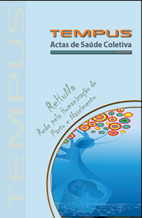Resumo
This article is the summary of the paper awarded with the Prize Abramge in 2007. As there is no unanimity in medical approaches about how childbirth should be assisted in human beings, the author studies the process of birth comparing supine and squatting position for birth, adopting a theoretical framework with six independent variables- Role of gravity; Compression of the maternal vasa; Diameters of the channel of childbirth; Angle of fit of the presentation (drive angle); Lung ventilation and maternal acid-base balance; Efficiency of the uterine contractions (during labor and during the second stage) – and two dependent variables - loss of blood during birth and Apgar at the first minute. Loss of blood, measured by the differences in the means of hemoglobine and hematocrit before and after birth, was significantly lower in the position squatting-supine (when after birth the woman is invited to lie down). The proportion of babies with a higher Apgar score (> 8) at the first minute was significantly higher in the group of squatting position. And inversely, a significant lower proportion on newborns with lower Apgar score (0 the 6) was found when the mother was in the squatting position. Given these results, it is suggested that official and hospital protocols adopt this position as a recommendation and usual practice.A Tempus garante critérios rigorosos, por meio de avaliação sistemática. Os autores se responsabilizam pela veracidade e ineditismo do trabalho cabendo a eles a cessão de direitos de publicação à revista. A confiabilidade dos conteúdos e a marca própria de apresentação tem como objetivo uma comunicação personalizada, adaptada aos padrões da revista, na medida em que adota critérios de excelência exigidos por seus usuários e especialistas, considerando os rigores da comunicação científica. Os autores devem especificar sua contribuição individual na concepção, delineamento, execução do trabalho, análise ou interpretação dos dados, redação e aprovação final do manuscrito. Incluir Fontes de financiamento e de apoio logístico das pesquisas. Ao final da submissão do artigo, os autores devem enviar uma declaração de cessão de direitos de publicação à Revista TEMPUS , assinada e no formato PDF (Portable Document Format ): Modelo da declaração de cessão de direitos.
